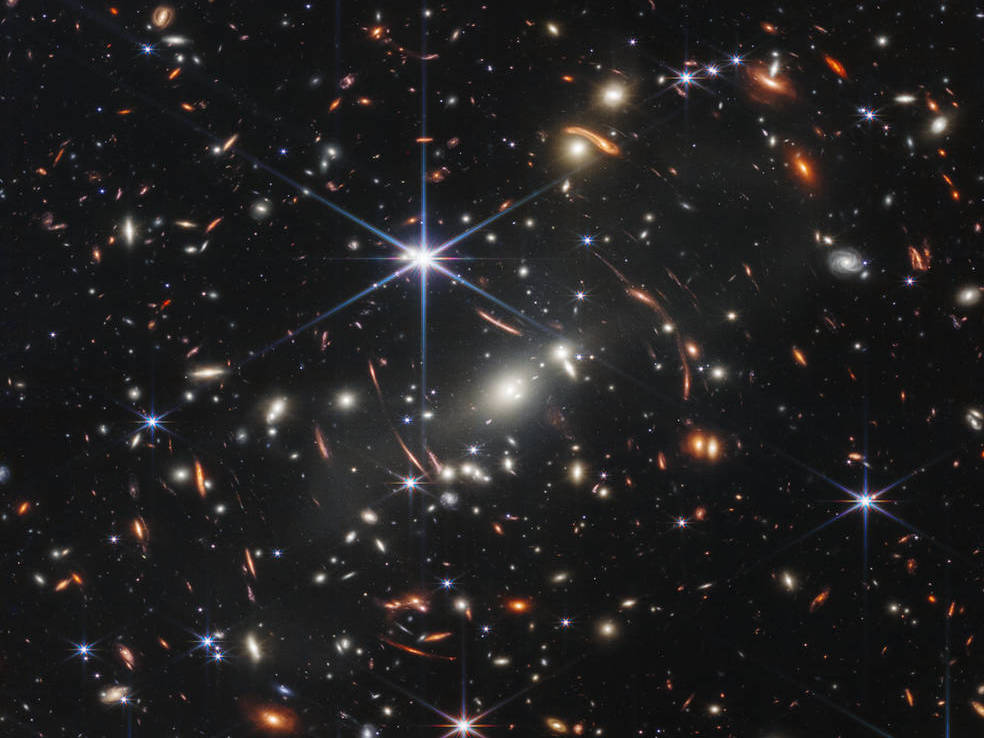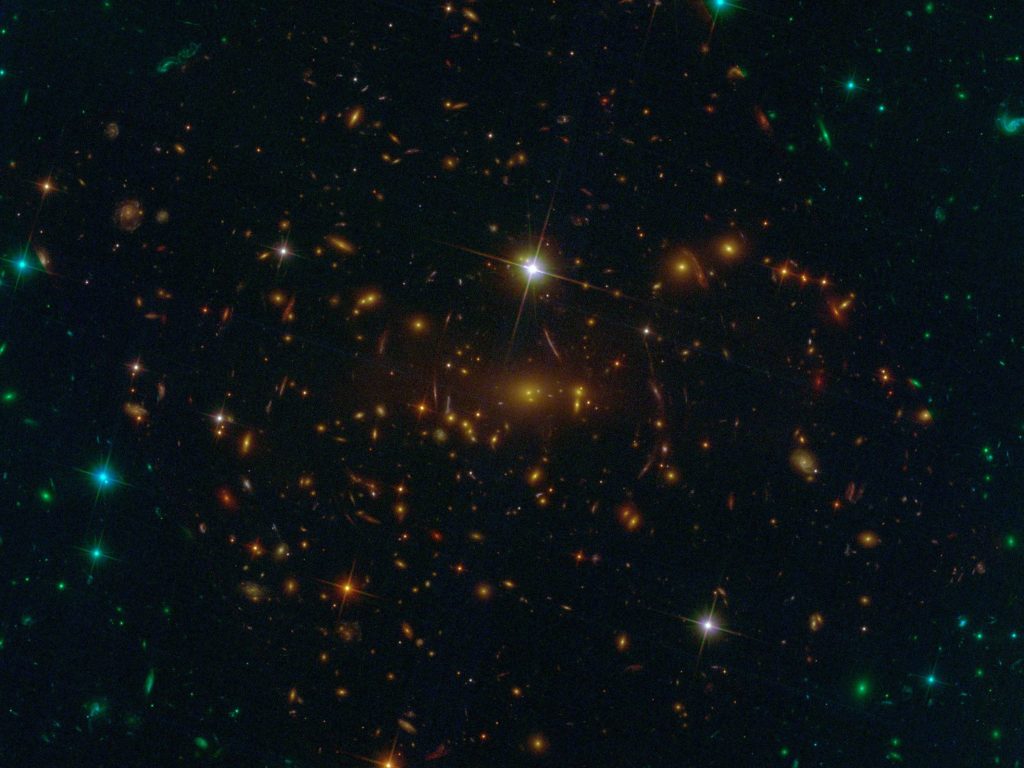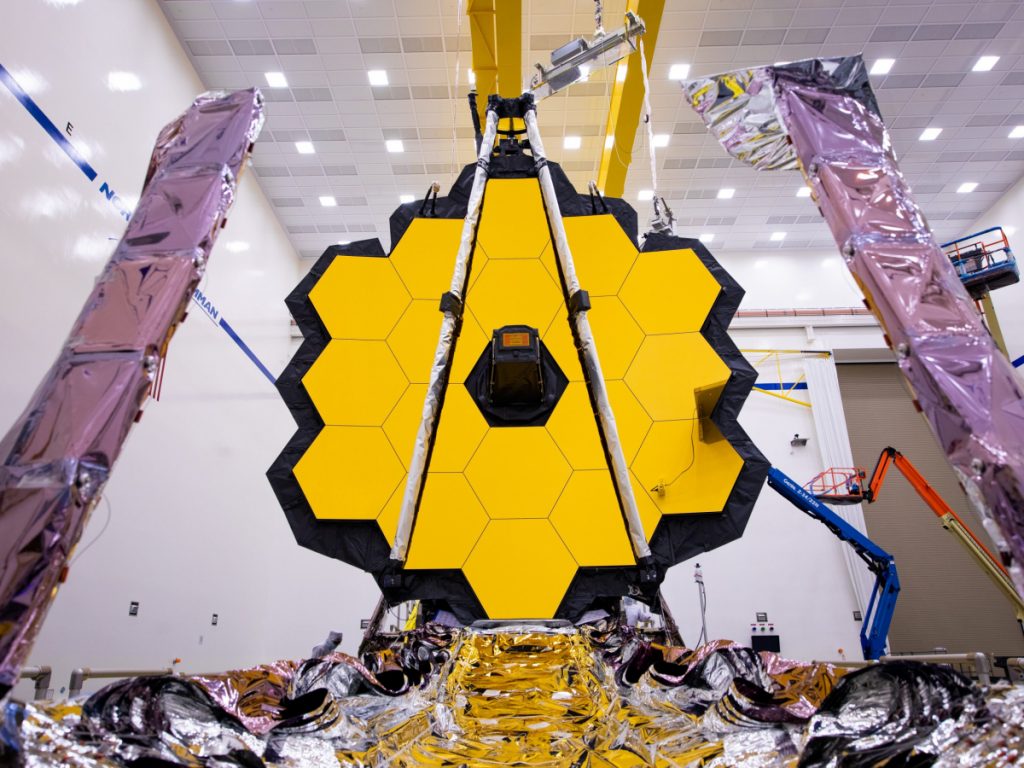News
NASA’s James Webb telescope reveals the universe as we’ve never seen it before
By: Joe Palca | Jaclyn Diaz | NPR
Posted on:
WASHINGTON, D.C. (NPR) — At first glance, the first image from NASA’s new James Webb Space Telescope may not seem all that remarkable.
But in reality, what appears to be tiny specks in space are actually galaxies — billions of years old.
“If you held a grain of sand on the tip of your finger at arms length, that is the part of the universe you are seeing — just one little speck of the universe,” NASA Administrator Bill Nelson said of the image on Monday.
And more than that, what’s picked up in this image are some of the very first galaxies to form in the universe. More images captured by the James Webb Space Telescope should be able to reveal which galaxies in the far, far distance are habitable, Nelson said.
The White House, along with NASA, revealed the first of a series of pictures from the telescope since it’s launch from Earth more than six months ago.
President Biden called Monday’s reveal “a historic day.”
NASA had planned to release the picture today as part of a collection of the first scientific results, but determined the image is so dramatic that Biden should be the one to reveal it to the world.
The $10 billion James Webb Space Telescope is the most sophisticated observatory ever launched. It left Earth last December. In late January, it reached its celestial parking place a million miles away from the planet. Since then, engineers have been checking out the instruments, aligning the mirrors and letting the telescope cool down so its instruments will work properly.
“Webb was built to find the first generation of galaxies that formed after the big bang,” says Jane Rigby, operations project scientist for the telescope. “That is the core science goal it was built to do.”
Before declaring the telescope open for business mission managers wanted to make what they call early release observations. These are intended to show that the telescope works, and as Rigby says, “are intended to be jaw-droppingly beautiful, powerful both visually and scientifically.”
In addition to the image containing the earliest galaxies ever seen, NASA will also release images of a stellar nursery where stars form called the Carina Nebula, the Southern Ring Nebula, and a group of galaxies discovered in 1787 called Stephan’s Quintet. There will also be an analysis of the light coming from a giant planet orbiting outside our solar system with the prosaic name WASP-96b. Those additional images are expected to come out on Tuesday morning.

Looking Back To The Beginning
Webb is designed to gather and analyze infrared light, which is at longer wavelengths than can be seen by the human eye. That will allow it to capture light from the earliest galaxies, which appear in the infrared.
Those early galaxies are far away — more than 13 billion light years — and as powerful as the Webb telescope is, they may just look like faint smudges. But those smudges will help astronomers understand more about how the universe as we know it came to be.
One of the astronomers who will be conducting the search for those earliest galaxies is Caitlin Casey, an astronomer at the University of Texas at Austin.
She says one way to look for these faint galaxies is to point the telescope at the same patch of sky for a hundred hours or more, and let the light from these distant objects trickle in. The Hubble space telescope showed this so-called deep field approach could identify lots of previously unseen galaxies.
But where Hubble was able to see ten thousand galaxies in a deep field, with Webb, “we’re going to have a million galaxies,” Casey says.
Beyond finding new galaxies, Casey wants to understand the large structure of the universe, what the universe would look like if you could step back and get a birds eye view of it.
“If you zoom all the way out, the entire universe looks like, you know, something like the interior of a sponge where there are these like little filaments and voids,” Casey says. “So what we really want to capture is that structure.”

Much More To See
But that’s just the beginning. The breadth of science Webb can be used for is staggering. For example, Megan Mansfield, a NASA Sagan Postdoctoral fellow at the University of Arizona, will be using Webb to study the atmospheres of planets orbiting stars outside our solar system.
In particular, she wants to know about their atmospheres — “what they’re made of, what their temperature is.” That will tell her a lot about the planet itself, and whether it might be capable of sustaining life.
Anna Nierenberg of the University of California, Merced, leads a team that has cooked up a clever way to use the new telescope to try to understand the fundamental nature of dark matter, that invisible stuff that makes up a quarter of the universe. “You simply can’t do that with any other instrument,” she says. “If everything works it will be a big deal.”
And as with any scientific instrument with new capabilities, no one really knows what secrets the Webb telescope will reveal about the universe we live in.
NPR’s Nell Greenfieldboyce contributed to this report.
9(MDU1ODUxOTA3MDE2MDQwNjY2NjEyM2Q3ZA000))

Transcript :
AILSA CHANG, HOST:
President Biden is set to unveil something truly remarkable – a picture of the universe and its galaxies in their infancy, around 13 1/2 billion years ago. It’s one of the first images taken by NASA’s new James Webb Space Telescope.
And joining us now for a preview of the image and what it all means is NPR’s Joe Palca. Hey, Joe.
JOE PALCA, BYLINE: Hi, Ailsa. Nice to talk to you.
CHANG: Nice to talk to you. So let me ask you, what is it about the James Webb Space Telescope that gives scientists this ability to see these galaxies that, like, other telescopes haven’t been able to see?
PALCA: Well, this is a really big telescope. It’s the biggest space telescope ever built. It has this giant segmented mirror coated in gold leaf. And I’ve stood next to it. It really is a remarkable piece of equipment. I mean, it was on Earth when I stood next to it. I haven’t been up into space yet.
(LAUGHTER)
PALCA: JWST, as the telescope is called, is an infrared telescope. That’s a wavelength of light we cannot see. It’s longer wavelength than visible light. And to see it efficiently, you need to go into space where it’s cold because warm objects tend to give off infrared light. You don’t want to be looking at your neighbor’s backyard or something like that.
CHANG: Right.
PALCA: So the reason infrared light is key to understanding the universe and seeing these early galaxies is the universe is expanding, and the light from those early objects is being stretched out by that expansion. So even though, if you were standing next to the galaxy – which is also what I’m not doing – it would be visible because of the expansion, the wavelengths – the light that reaches earth is – the wavelengths of that light are getting longer, and it’s now in the infrared. So if you want to see it, you need to have an infrared camera.
CHANG: Ah, OK. So what will these, like, distant young galaxies even look like, you think?
PALCA: Well, I have to tell you, they’re going to not look all that impressive because JWST is a big telescope. It does have a big mirror. It does capture a lot of light. But this is still light from 13 – more than 13 billion light-years away. So you only get a few drops of light. And what – it might look a little more like a smudge than anything else.
CHANG: (Laughter) OK.
PALCA: But still, the more of them they can find, the happier astronomers will be. I spoke with Caitlin Casey. She’s an astronomer at the University of Texas, Austin, who is going to be using the telescope to hunt for more of these early galaxies. She wants to understand the large structure of the universe, what the universe would look like if you could step back and get a bird’s-eye view of it.
CAITLIN CASEY: If you zoom all the way out, the entire universe looks like, you know, something like the interior of a sponge, where there are these, like, little filaments and voids. And so what we really want to capture is that structure.
CHANG: OK. It’s kind of blowing my mind that we’re basically living in a giant universe-sized sponge. But anyway, so, you know, beyond studying that structure, what are some of the other things scientists hope to learn using the Webb telescope?
PALCA: Well, I’ve spent the last few days talking to people. And they’re really so excited – these astronomers. They’re going to be using it to study the atmospheres of distant planets, orbiting distant stars. They’re going to be looking for a place capable of sustaining life, and they’re going to watch stars and galaxies form. But the coolest thing, I think, is I spoke with Jean Turner from UCLA. She’s studying massive stars that tend to hide behind interstellar dust. And she says an infrared telescope like GWST will let her see those.
JEAN TURNER: What I love more than anything is seeing something unexpected. And that happens all the time. And I know it’s going to happen with JWST. It’s guaranteed.
PALCA: And I think Turner is making a pretty safe bet here because every time they take a new telescope – a new kind of instrument – you see something you weren’t expecting. And that’s what makes it so really cool to get that first couple of looks.
CHANG: So cool. That is NPR science correspondent Joe Palca. Thank you, Joe.
PALCA: You bet. Transcript provided by NPR, Copyright NPR.

